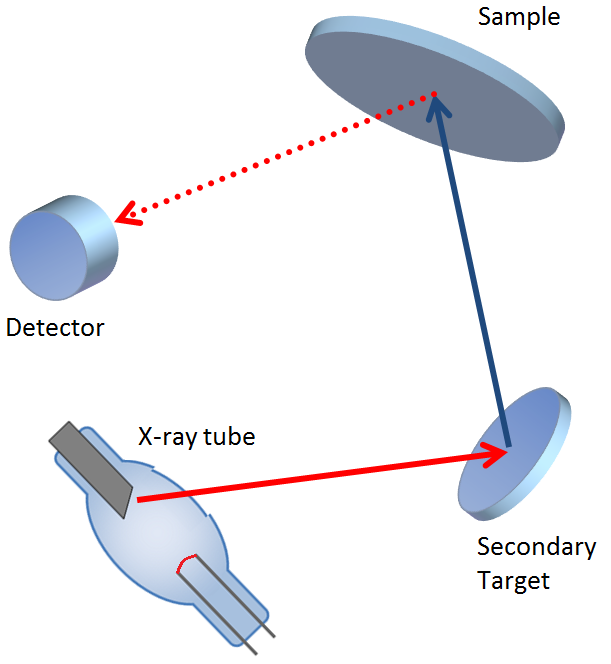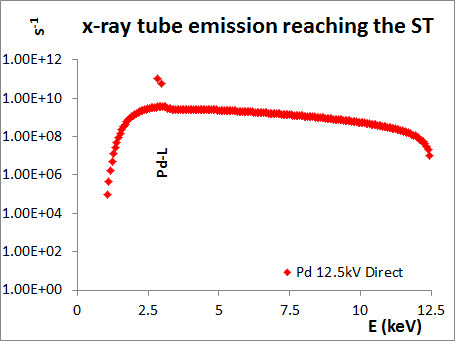3.1.2.3 Secondary targets and scatter devices
Another approach for improved sample excitation is based on an arrangement of the x-ray tube, a secondary target and the detector in a 3-axial, mutually perpendicular to each other orientations, geometry. Such method of excitation is known as Secondary Target XRF (or Polarized XRF). When using a secondary target configuration, the sample is excited mainly with the secondary target material characteristic emission. By choosing a suitable target the excitation energy can be selected as close to the absorption edge of the elements of interest as possible, thus improving the x-ray production.

|

|
Whilst the flux intensity of the characteristic radiation of the secondary target element is only two orders of magnitude lower than that of the direct x-ray tube anode emission, the intensity of the Bremstrahlung radiation reaching the sample decreases by a factor of no less than thousand. The latter allows to reduce the measured continuum background and to improve the detection limits.